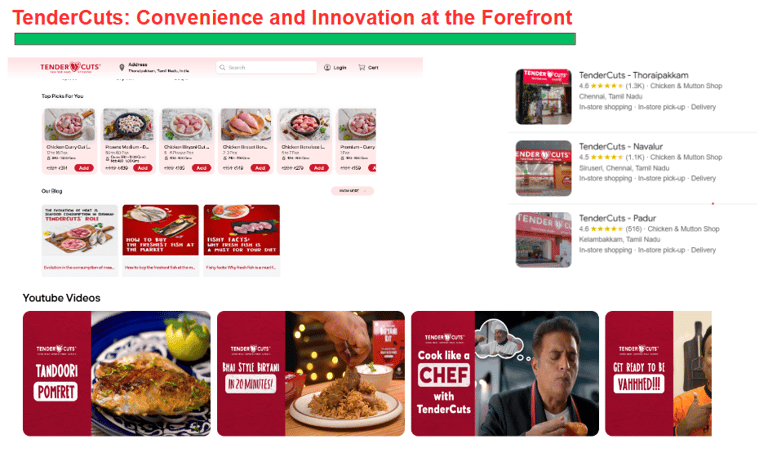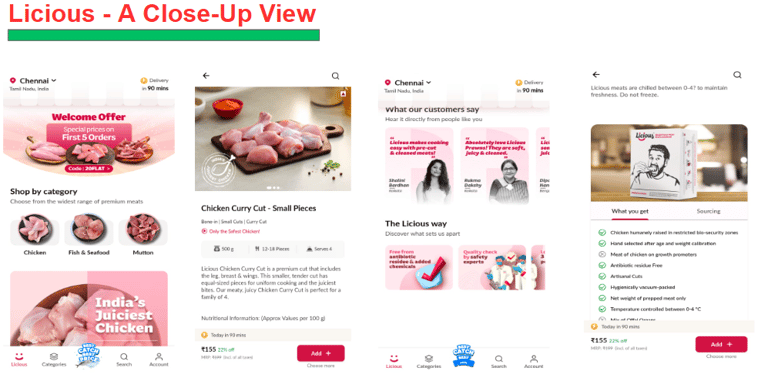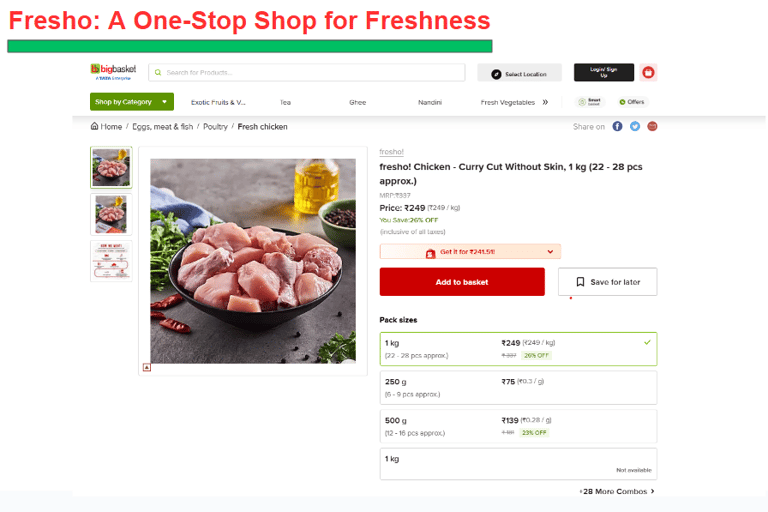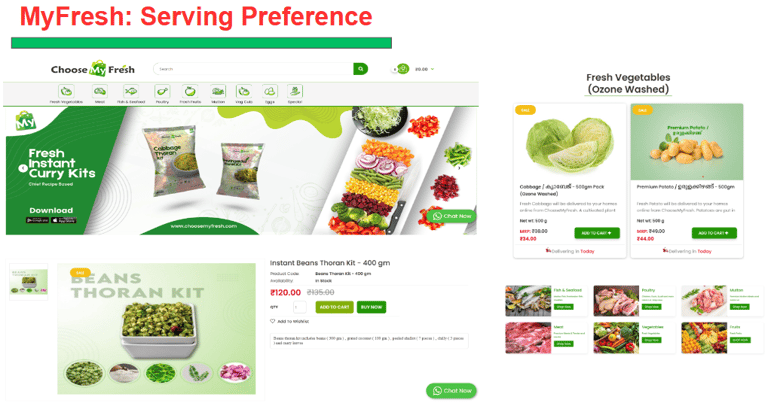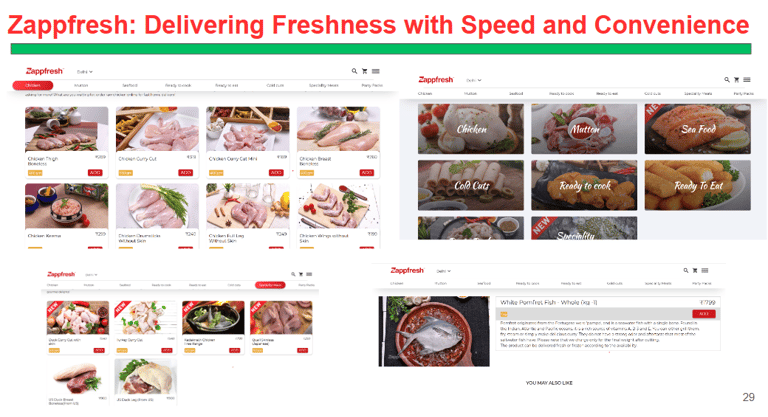Enhancing Product Discovery on FreshToHome: A Case Study of a passion project
Case study
CASE STUDIES
11/13/20244 min read
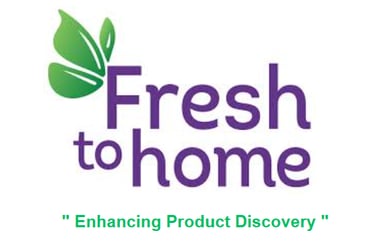

In today's digital age, online grocery shopping has become increasingly popular, offering convenience and a wide variety of choices to consumers. However, with extensive product catalogs, it can be challenging for customers to efficiently find the items they need. This case study examines the product discovery experience on FreshToHome, a leading online provider of fresh meat and seafood, and proposes solutions to enhance the user journey and improve overall customer satisfaction.
Understanding the Challenge
FreshToHome boasts an impressive selection of fresh meat and seafood products. However, navigating this vast array of choices can sometimes feel overwhelming for customers. Inefficient product discovery can lead to frustration, potentially causing users to abandon their shopping carts and impacting FreshToHome's conversion rates.
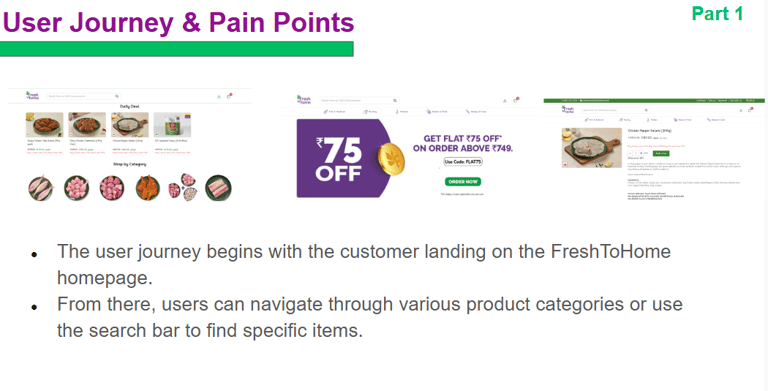

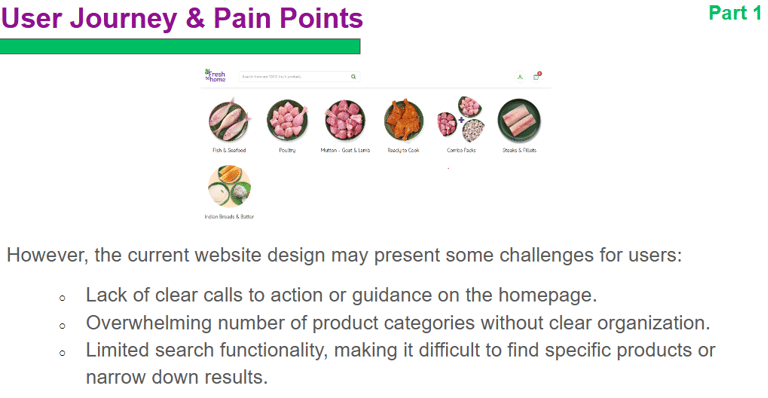

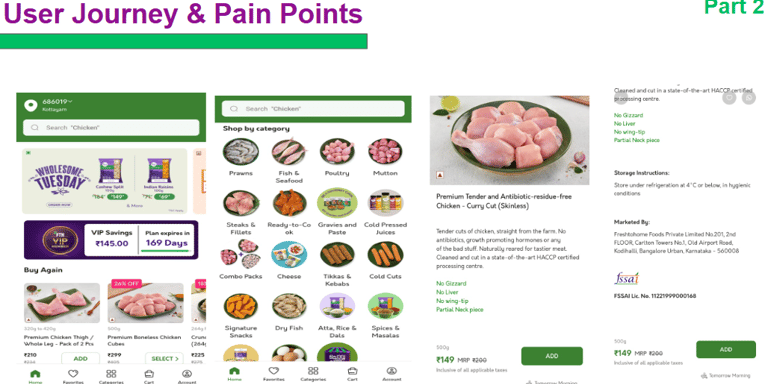

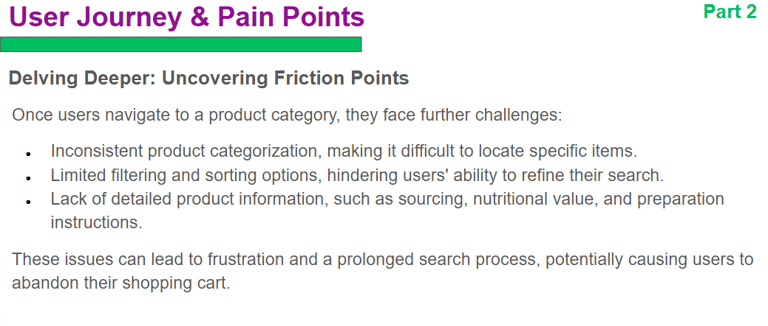

My Approach: A User-Centric Perspective
As a passionate advocate for user-centric design, I embarked on a project to analyze FreshToHome's product discovery process and identify areas for improvement. My goal was to empower customers to seamlessly navigate the platform, effortlessly finding the products that best suit their needs, and ultimately creating a more enjoyable and efficient online shopping experience.
Research Methodology
To gain a comprehensive understanding of FreshToHome's current user experience, I employed a multi-faceted research approach:
User Interviews: I conducted in-depth interviews with various FreshToHome customers, exploring their experiences, preferences, and pain points encountered while navigating the platform. These interviews provided valuable qualitative insights into customer needs and expectations.
Usability Testing: Through observation of users interacting with the FreshToHome website and app, I identified areas of friction and frustration within the product discovery process. This direct observation allowed me to pinpoint specific usability challenges faced by customers.
Heuristic Evaluation: I meticulously analyzed the website and app's interface and functionality against established usability principles. This heuristic evaluation helped identify potential areas for improvement in terms of user-friendliness and efficiency.
Competitive Analysis: I examined product discovery experiences on competitor websites to discern best practices and identify opportunities for FreshToHome to differentiate itself within the market. This competitive analysis provided valuable benchmarks and inspiration for innovation.
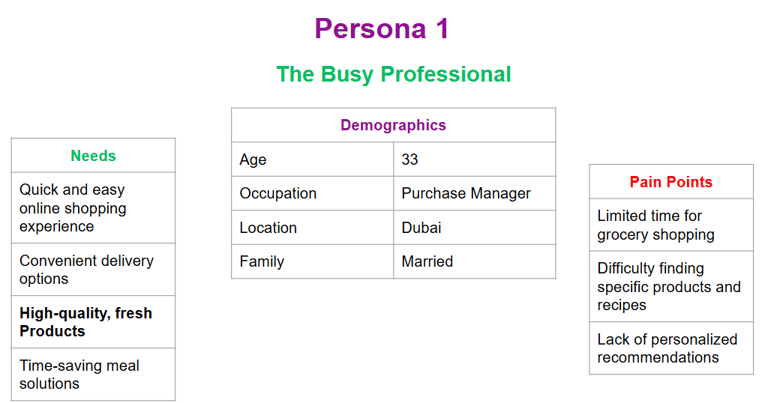

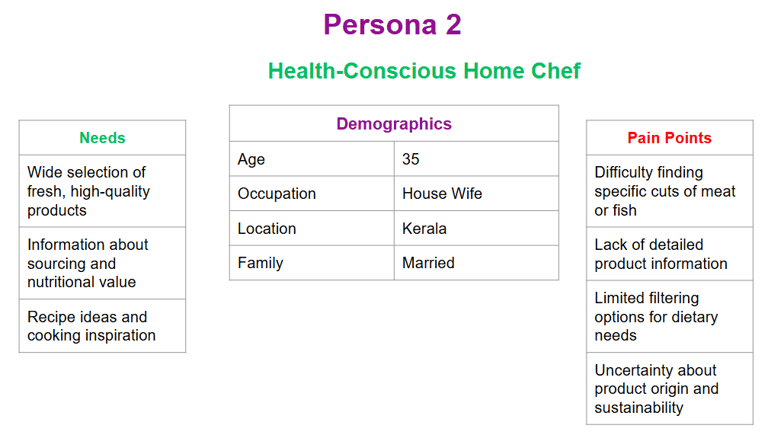


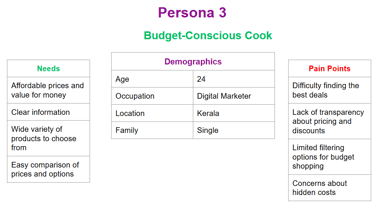
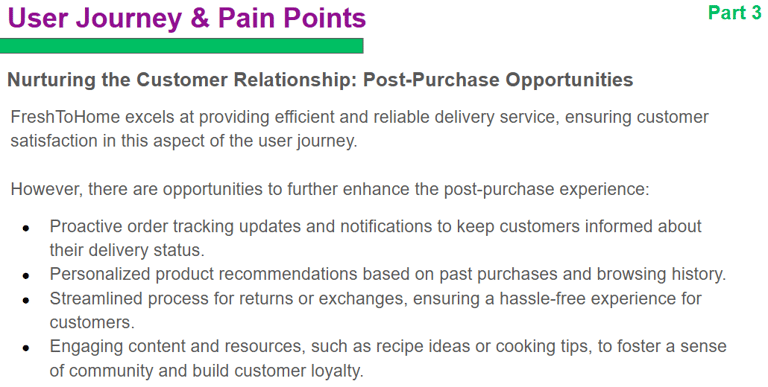

Key Findings
My research revealed several critical areas for improvement in FreshToHome's product discovery journey:
Communication Gaps: The platform lacked a clear and consistent voice regarding product quality, freshness, and the brand's core values.
Inadequate Product Information: Product pages lacked comprehensive details regarding sourcing, nutritional value, and preparation instructions, hindering informed decision-making.
Limited Personalization: The absence of personalized recommendations and targeted offers failed to cater to individual customer preferences and purchase history.
Complex Navigation: The website and app presented an overwhelming number of product categories without clear and intuitive organization.
Restricted Search Functionality: Limited search capabilities made it difficult for users to efficiently locate specific products or refine their search based on individual needs.
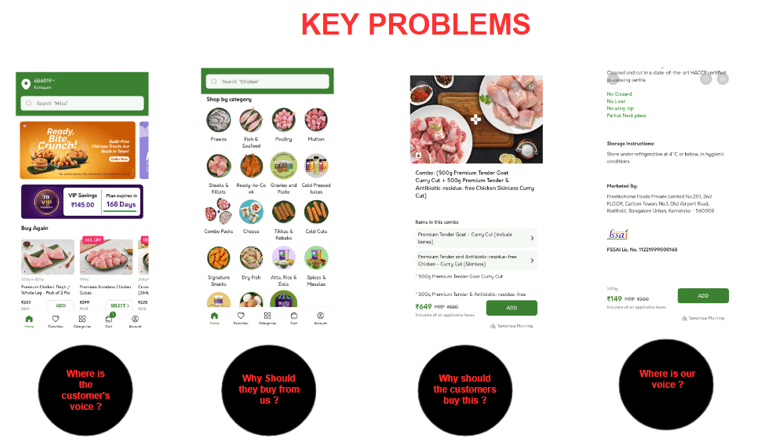

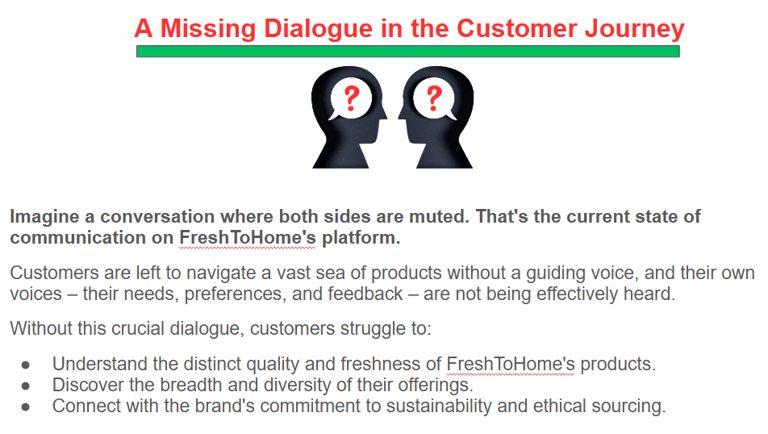

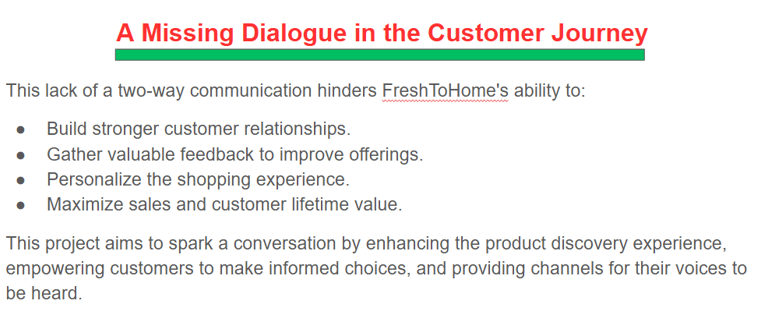

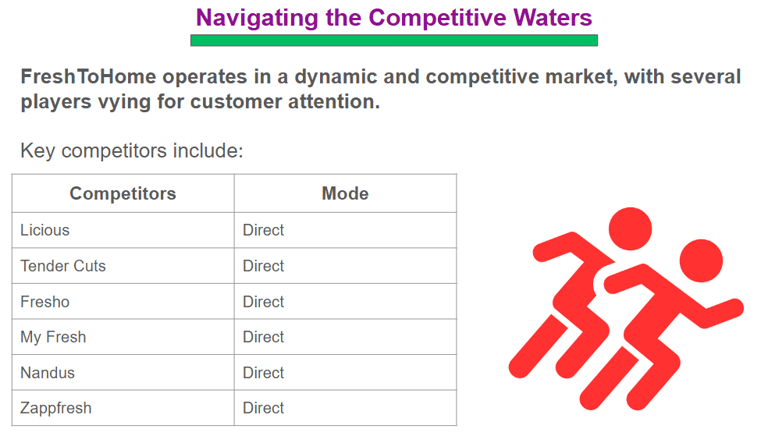

Proposed Solutions
To address the identified challenges, I propose a series of enhancements to FreshToHome's platform:
Clear Communication Strategy: Develop compelling content that effectively communicates FreshToHome's commitment to quality, freshness, and ethical sourcing, employing storytelling and visuals to resonate with customers on an emotional level.
Enhanced Product Pages: Redesign product pages to incorporate high-quality images, comprehensive product information, customer reviews, and personalized suggestions, facilitating informed purchase decisions.
Personalized Recommendations: Implement a robust recommendation engine that suggests products based on past purchases, browsing history, and individual preferences, enhancing the shopping experience.
Streamlined Navigation: Improve the website and app's navigation through clear calls to action, intuitive category organization, and informative visuals, ensuring a seamless browsing experience.
Smarter Search Functionality: Implement a more powerful search engine equipped with filters for categories, dietary needs, price, and product-specific attributes, complemented by auto-suggestions and visual cues in search results.
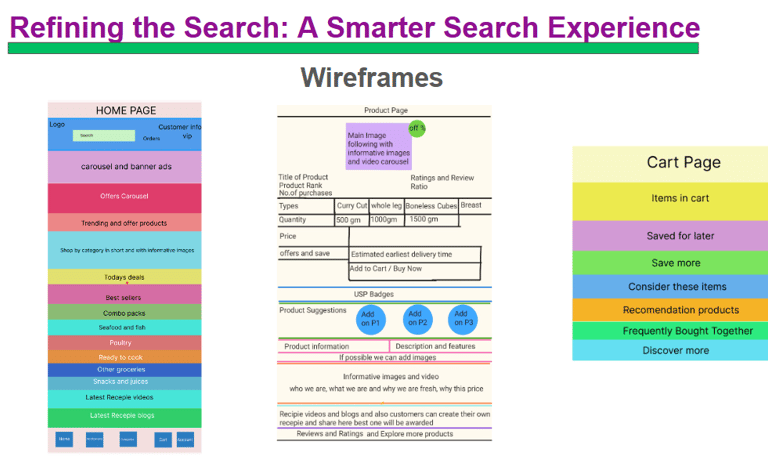

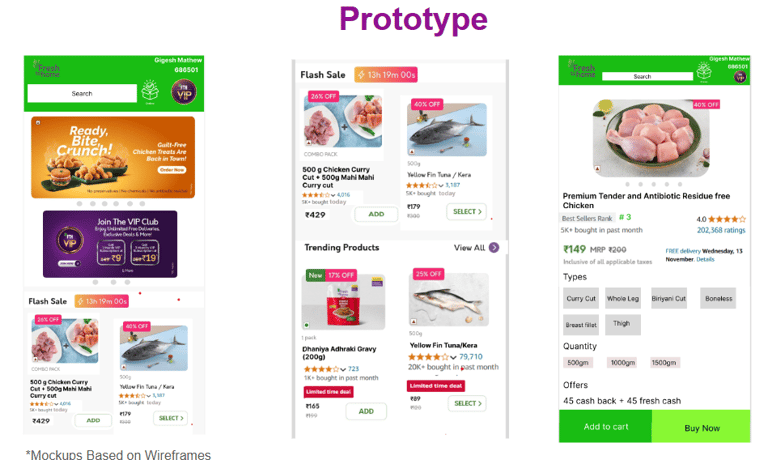

Conclusion
By addressing the identified challenges and implementing the proposed solutions, FreshToHome can significantly enhance its product discovery experience, leading to increased customer satisfaction, improved conversion rates, and a stronger brand reputation.
Competitive landscape
